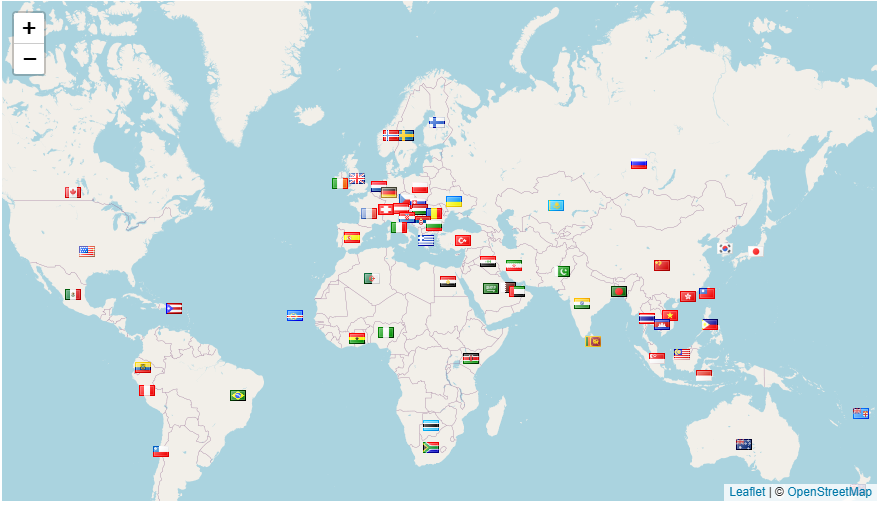Performance Analysis of LiFePO4 Batteries as a Replacement for Motorcycle Accumulators
DOI:
https://doi.org/10.70822/journalofevrmata.v3i01.70Keywords:
LiFePO4, Motorcycle battery, monitoring system, performance of motorcycleAbstract
Conventional motorcycle batteries, including wet and maintenance-free types, suffer from limited lifespan, sulfation issues, and high maintenance requirements. This study proposes a LiFePO4 battery pack as a superior alternative, integrating a real-time monitoring system for enhanced performance tracking. Compared to conventional batteries, the developed system offers longer cycle life, improved thermal stability, and reduced maintenance. The battery pack consists of LiFePO4 cells (3.2V 6Ah) arranged in a 4-series 1-parallel configuration, delivering a 12V 6Ah output while maintaining compatibility with standard motorcycle battery dimensions. Experimental testing validates the system’s ability to monitor current, voltage, and temperature parameters effectively. The integration of a data logging system further ensures long-term reliability and optimization of battery performance. This research contributes to advancing motorcycle battery technology by enhancing durability, safety, and real-time performance monitoring.
References
X. Zhu, Q. Wang, X. He, Q. Du, and Y. Sha, “Research on the Performance of Accumulators Driven by an Electronically Controlled Hydraulic Vehicle,” J. Phys. Conf. Ser., vol. 1550, no. 4, 2020, doi: 10.1088/1742-6596/1550/4/042012.
L. Toro et al., “A Systematic Review of Battery Recycling Technologies: Advances, Challenges, and Future Prospects,” Energies, vol. 16, no. 18, pp. 1–24, 2023, doi: 10.3390/en16186571.
S. Xiaodong and V. Ishchenko, “Environmental Impact Analysis of Waste Lithium-Ion Battery Cathode Recycling,” J. Ecol. Eng., vol. 25, no. 7, pp. 352–358, 2024, doi: 10.12911/22998993/189187.
S. Srinivasan, S. Shanthakumar, and B. Ashok, “Sustainable lithium-ion battery recycling: A review on technologies, regulatory approaches and future trends,” Energy Reports, vol. 13, no. December 2024, pp. 789–812, 2025, doi: 10.1016/j.egyr.2024.12.043.
A. Machín, M. C. Cotto, F. Díaz, J. Duconge, C. Morant, and F. Márquez, “Environmental Aspects and Recycling of Solid-State Batteries: A Comprehensive Review,” Batteries, vol. 10, no. 7, 2024, doi: 10.3390/batteries10070255.
C. Iclodean, B. Varga, N. Burnete, D. Cimerdean, and B. Jurchiş, “Comparison of Different Battery Types for Electric Vehicles,” IOP Conf. Ser. Mater. Sci. Eng., vol. 252, no. 1, 2017, doi: 10.1088/1757-899X/252/1/012058.
C. Chen, H. Ma, and Y. Wang, “The Progress and Future Prospects of Lithium Iron Phosphate Cathode Materials,” Highlights Sci. Eng. Technol., vol. 3, pp. 31–42, 2022, doi: 10.54097/hset.v3i.690.
S. Mahmud et al., “Recent advances in lithium-ion battery materials for improved electrochemical performance: A review,” Results Eng., vol. 15, no. June, p. 100472, 2022, doi: 10.1016/j.rineng.2022.100472.
A. V. Kubarkov, A. V. Babkin, O. A. Drozhzhin, K. J. Stevenson, E. V. Antipov, and V. G. Sergeyev, “Engendering High Energy Density LiFePO4 Electrodes with Morphological and Compositional Tuning,” Nanomaterials, vol. 13, no. 11, 2023, doi: 10.3390/nano13111771.
Y. M. Tseng, H. S. Huang, L. S. Chen, and J. T. Tsai, “Characteristic research on lithium iron phosphate battery of power type,” MATEC Web Conf., vol. 185, pp. 1–8, 2018, doi: 10.1051/matecconf/201818500004.
Z. Cao et al., “Second-Life Assessment of Commercial LiFePO4 Batteries Retired from EVs,” Batteries, vol. 10, no. 9, p. 306, 2024, doi: 10.3390/batteries10090306.
hossein rostami, J. Valio, P. Tynjälä, U. Lassi, and P. Suominen, “Life Cycle of LiFePO4 Batteries: Production, Recycling, and Market Trends,” ChemPhysChem, vol. 202400459, 2024, doi: 10.1002/cphc.202400459.
H. Liu, X. Cheng, Y. Chong, H. Yuan, J. Q. Huang, and Q. Zhang, “Advanced electrode processing of lithium ion batteries: A review of powder technology in battery fabrication,” Particuology, vol. 57, pp. 56–71, 2021, doi: 10.1016/j.partic.2020.12.003.
X. Zhang, P. Sun, S. Wang, and Y. Zhu, “Experimental Study of the Degradation Characteristics of LiFePO4 and LiNi0.5Co0.2Mn0.3O2 Batteries during Overcharging at Low Temperatures,” Energies, vol. 16, no. 6, 2023, doi: 10.3390/en16062786.
E. R. Logan et al., “ The Effect of LiFePO 4 Particle Size and Surface Area on the Performance of LiFePO 4 /Graphite Cells ,” J. Electrochem. Soc., vol. 169, no. 5, p. 050524, 2022, doi: 10.1149/1945-7111/ac6aed.
M. S. Mollik, M. M. Rashid, A. Rahman, and A. Hasan, “Temperature effect and battery charging characteristics analysis based on charging C-rate,” Int. J. Eng. Adv. Technol., vol. 9, no. 1, pp. 159–165, 2019, doi: 10.35940/ijeat.A1098.109119.
Z. Zhang, L. Lu, Y. Li, H. Wang, and M. Ouyang, “Accurate Remaining Available Energy Estimation of LiFePO4 Battery in Dynamic Frequency Regulation for EVs with Thermal-Electric-Hysteresis Model,” Energies, vol. 16, no. 13, 2023, doi: 10.3390/en16135239.
Y. Zhao, W. Shi, and M. Zhang, “Analysis of the memory effect of lithium iron phosphate batteries charged with stage constant current,” IOP Conf. Ser. Earth Environ. Sci., vol. 804, no. 3, 2021, doi: 10.1088/1755-1315/804/3/032064.
Y. A. Winoko, “ESP 8266-based Car Battery Current and Voltage Monitoring Design,” EvrimataJournal Mech. Eng., vol. 01, no. 02, pp. 51–56, 2024.
N. Alia, F. A. Perdana, P. Udianto, and E. Puspitasari, “Sustainable Power Generation through Dual-Axis Solar Tracking for Off-Grid 100Wp Photovoltaic Systems,” Evrimata J. Mech. Eng., vol. 01, no. 04, pp. 118–124, 2024.
S. Afroze et al., “Emerging and Recycling of Li-Ion Batteries to Aid in Energy Storage, A Review,” Recycling, vol. 8, no. 3, 2023, doi: 10.3390/recycling8030048.
F. Omenya, M. Paiss, X. Li, and D. Reed, “Energy and Power Evolution Over the Lifetime of a Battery,” ACS Energy Lett., vol. 8, no. 6, pp. 2707–2710, 2023, doi: 10.1021/acsenergylett.3c00660.
R. M. Aryono and S. Winardi, “Designing Control and Monitoring Tools Accu Charging and Power Consumption Using Internet of Things (IoT) Technology,” Proceeding Int. Conf. Aviat. Educ. Train., vol. 1, no. 1, pp. 21–30, 2022.
Jonatan Ali Medina Molina et al., “Comparison of electrical measurements between different devices for smart meter applications,” Glob. J. Eng. Technol. Adv., vol. 19, no. 3, pp. 071–078, 2024, doi: 10.30574/gjeta.2024.19.3.0089.
T. T. Guingane et al., “Evaluation of the Performance of Lithium-Ion Accumulators for Photovoltaic Energy Storage,” Energy Power Eng., vol. 15, no. 12, pp. 517–526, 2023, doi: 10.4236/epe.2023.1512029.
C. N. Karimah, “Analisa Baterai Sebagai Sumber Kelistrikan Kendaraan Roda Dua Ditinjau Dari Kapasitas Dan Efisiensi,” J. Tek. Terap., vol. 2, no. 1, pp. 1–11, 2023, doi: 10.25047/jteta.v2i1.24.
M. Bilal, A. Kahvi, and S. H. Susilo, “Battery Management System ( BMS ) Planning on Quadcopter Flying Electric Vehicle,” Evrimata Eng. Phys., vol. 02, no. 02, pp. 112–117, 2024.
Nila Alia et. al., “The Evaluation of Cell Balancing Development for Battery,” Annu. Technol. Appl. Sci. Eng., vol. 080002, no. Aprl 2023, p. https://doi.org/10.1063/5.0125913, 2023.
Widjanarko, N. Alia, S. Prasetya, P. Udianto, and F. A. Perdana, “Real Time Energy Management System for LiFePO4 Portable Generator Using Smart BMS,” Proc. 2022 Annu. Technol. Appl. Sci. Eng. Conf. (ATASEC 2022), pp. 91–102, 2022, doi: 10.2991/978-94-6463-106-7_9.
Widjanarko, N. Alia, P. Udianto, and F. Perdana, “Low-cost development smart web monitoring system of the rooftop standalone solar power plant,” AIP Conf. Proc., vol. 2531, no. May 2019, 2023, doi: 10.1063/5.0126734.
G. J. Chen and W. H. Chung, “Evaluation of Charging Methods for Lithium-Ion Batteries,” Electron., vol. 12, no. 19, 2023, doi: 10.3390/electronics12194095.
M. Shang, Z. Zhang, and C. Yin, “Mitigating HV battery malfunctions in a 48 V P0 mild hybrid system: A novel voltage control strategy,” Adv. Mech. Eng., vol. 16, no. 9, pp. 1–20, 2024, doi: 10.1177/16878132241281643.
Downloads
Published
Issue
Section
License
Copyright (c) 2025 nila, Fengky Adie Perdana, Widjanarko, Eva Weddakarti, Chandra Gunawan

This work is licensed under a Creative Commons Attribution 4.0 International License.







